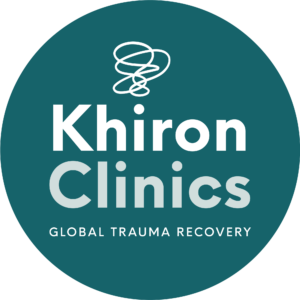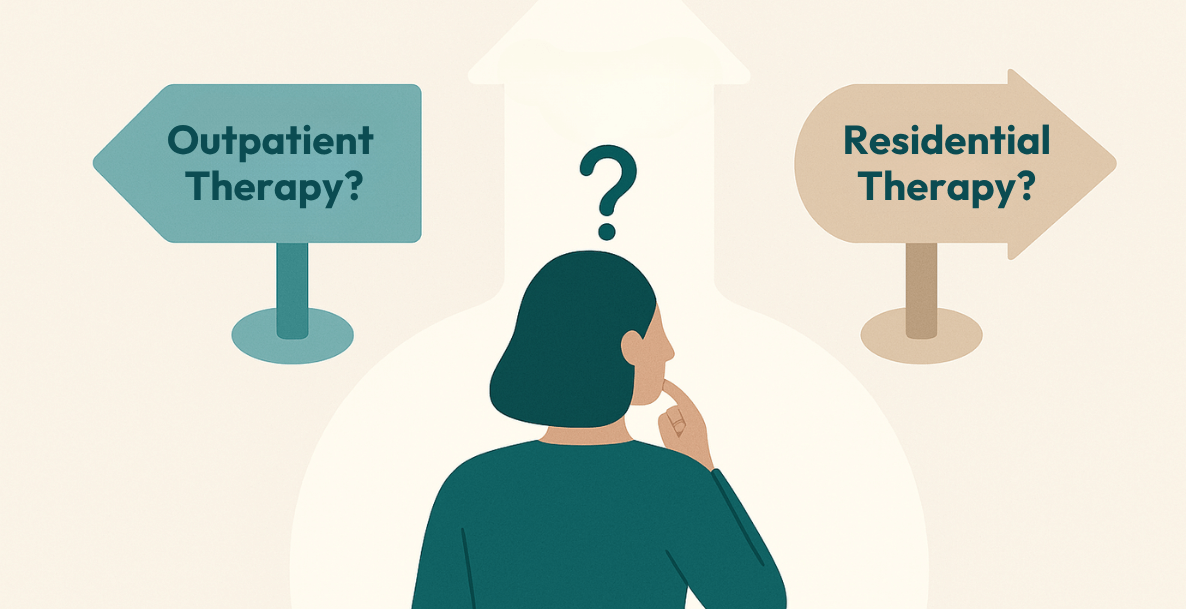Are you aware that there is a powerful tool at your disposal to help reduce anxiety, stress, and negative reactions to life’s adversities? Finding the ventral vagal state will allow you to alter the state of your nervous system from one that is dysregulated and reactive to one that is calm and positive.
The vagus nerve is the longest cranial nerve within the body and carries messages quickly from the brain to the lungs, heart, and intestines, as well as regulating facial muscles and skin sensations. In addition, the vagus nerve is a core component of our autonomic nervous system, which activates our survival responses when faced with threat or danger.
In this blog, we will explore the vagus nerve, its connection to our autonomic nervous system, and how through social engagement, we can discover the ventral vagal state, allowing us to lead a more joyful, grounded life.

Download the Brochure
Discover Our Innovative Trauma Recovery Pathway
The Autonomic Nervous System
The autonomic nervous system regulates involuntary physiological processes, including respiration, blood pressure, heart rate, and digestion.[1] This nervous system is comprised of two core parts – sympathetic and parasympathetic.
- Sympathetic – the sympathetic nervous system (SNS) stimulates the fight or flight response.
- Parasympathetic – the parasympathetic nervous system (PNS) is responsible for the rest and digest r
The fight or flight and rest and digest responses are shared by all mammals on the planet, as these survival responses are crucial for our evolution. All mammals respond to danger with fight, flight, or freeze, depending on the threat faced. These could be threats to our safety, perceived threats, or psychological fears. If it is a threat you can defeat, you are likely to respond with fight. If you cannot beat it, you will likely run from it (flight), and if you can do neither, you may freeze.[2]
Upon stimulation of this survival response, the sympathetic nervous system releases catecholamines, including adrenaline and noradrenaline.[3] Blood will be pumped towards the legs and major muscles to better prepare you for fighting or fleeing. Heart rate and breathing will increase, digestive function will relax, and all the senses will become heightened.[4]
These physiological responses are acute and involuntary; however, although often unpleasant, they are crucial for our survival. Once a threat has passed, a well-regulated nervous system will activate the parasympathetic nervous system (PNS), which activates the rest and digest response.[5] This is a state of homeostasis and safety, producing calm by steadying respiratory function, lowering heart rate, and releasing the stored energy from the muscles and the body. This process should happen twenty to thirty minutes after the danger has passed; however, if the PNS is not effectively activated, the traumatic energy becomes stored in the body.
This stored traumatic energy can cause significant mental and physical distress as it leads to an exaggerated stress response within the individual. As a result, reactions to threat are likely to become exaggerated, with the SNS becoming overstimulated. In turn, the PNS can further decrease functionality, resulting in an individual becoming unable to respond to triggers appropriately and remaining in a perpetual mode of fight or flight and unable to return to their natural, harmonious state.
The Polyvagal Theory
The Polyvagal Theory [6] proposes that the vagus nerve is key to our fight-flight-freeze response through its connection to the PNS. The vagus nerve has two components that become activated during this response:
- The Dorsal Branch of the vagus nerve stimulates our freeze response. This can cause tonic immobility, motor inhibition, and a general slowing down of bodily functions.[7]
- The Ventral Branch activates the rest and digest response, lowering stress and returning our body to calm.
Our perception of and reaction to threat is determined by our past trauma, conditioning, how we react to stress, and how we recover from difficulties. These responses are often involuntary and subconscious; however, The Polyvagal Theory proposes that discovering the ventral vagal state through the ventral branch can foster calm, a sense of safety, and allow personal growth and freedom from triggers.
Explore Our Treatment Options
Find Out What Makes Us Different
The staff at our globally recognised mental health clinic have been informed, trained and supervised by some of the world’s leading trauma experts such as Dr Bessel van der Kolk, Dr Janina Fisher, Dr Stephen Porges, Dr Dick Schwartz and more.
Finding the Ventral Vagal State
Dr Stephen Porges, the author of The Polyvagal Theory, proposes that when we feel safe within our experience, we are operating from within our social engagement system.[8] Our social engagement system allows us to feel connected to ourselves, others, and the world around us. It is activated from being in our ventral vagal state and stimulates physical and psychological responses:
- Physical – reduced heart rate, steadier breathing, relaxed digestion, and a reduction in stress hormones.
- Psychological – a sense of safety, empathy, compassion, joy, mindfulness, and connection.
To find the ventral vagal state, it is essential to explore these key areas of personal growth:
- Triggers – explore and understand our triggers. Immerse ourselves in positive conditions, become aware of our perception of threat and how it is played out in the body, and develop positive coping mechanisms through body awareness therapy.
- Social Conditions – seek out and foster relationships where we feel confident and comfortable. This will activate the social engagement system and result in us feeling safe and having lowered stress responses.
- Body Awareness Techniques – by becoming more embodied, an individual can respond proactively to the physiological changes, learning how to navigate through fight-flight-freeze through Somatic Experiencing can help people find their way into the safe ventral vagal state.
Living in the fight or flight response takes its toll on the body and mind due to the acute physical and psychological stress it creates. However, finding the ventral vagal state assists us in navigating our daily challenges, constructing positive relationships, and guides us into living in an embodied, grounded state.
If you have a client or know of someone struggling to heal from psychological trauma, reach out to us at Khiron Clinics. We can improve therapeutic outcomes and avoid misdiagnosis by providing an effective residential program and outpatient therapies addressing underlying psychological trauma. Allow us to help you find the path to realistic, long-lasting recovery. For further information, call us today at UK: +44 (0) 20 3811 2575 (24 hours) or USA: +1 (866) 801 6184 (24 hours). All calls are completely confidential.
[1] Waxenbaum JA, Reddy V, Varacallo M. Anatomy, Autonomic Nervous System. [Updated 2020 Aug 10]. In: StatPearls [Internet]. Treasure Island (FL): StatPearls Publishing; 2021 Jan-. Available from: https://www.ncbi.nlm.nih.gov/books/NBK539845/
[2] Schmidt, Norman B. et al. “Exploring Human Freeze Responses To A Threat Stressor”. Journal Of Behavior Therapy And Experimental Psychiatry, vol 39, no. 3, 2008, pp. 292-304. Elsevier BV, doi:10.1016/j.jbtep.2007.08.002. Accessed 01 June 2021.
[3] Heckman, William. “How The Fight and Flight Response Works – The American Institute Of Stress”. The American Institute Of Stress, 2021, https://www.stress.org/how-the-fight-or-flight-response-works.
[4] “What Is ‘Fight, Flight Or Freeze’?”. North West Boroughs Healthcare, 2021, https://www.nwbh.nhs.uk/healthandwellbeing/Pages/Fight-or-Flight.aspx.
[5] Wagner, Dee. “Polyvagal Theory In Practice – Counseling Today”. Counseling Today, 2016, https://ct.counseling.org/2016/06/polyvagal-theory-practice/.
[6] Porges, Stephen W. “The Polyvagal Theory: New Insights Into Adaptive Reactions Of The Autonomic Nervous System”. Cleveland Clinic Journal Of Medicine, vol 76, no. 4 suppl 2, 2009, pp. S86-S90. Cleveland Clinic Journal Of Medicine, doi:10.3949/ccjm.76.s2.17. Accessed 01 June 2021.
[7] Volchan, Eliane et al. “Is There Tonic Immobility In Humans? Biological Evidence From Victims Of Traumatic Stress”. Biological Psychology, vol 88, no. 1, 2011, pp. 13-19. Elsevier BV, doi:10.1016/j.biopsycho.2011.06.002. Accessed 01 June 2021.
[8] Porges, Stephen W. “The Polyvagal Theory: New Insights Into Adaptive Reactions Of The Autonomic Nervous System”. Cleveland Clinic Journal Of Medicine, vol 76, no. 4 suppl 2, 2009, pp. S86-S90. Cleveland Clinic Journal Of Medicine, doi:10.3949/ccjm.76.s2.17. Accessed 01 June 2021.





